What is colour?
Different wavelengths of light trigger different human responses. In our eyes, S-, M- and L-type cones are responsible for detecting blue (short), green (medium) and red (long) colours from the visible spectrum, and are less sensitive to the surrounding wavelengths. The brain determines colour from their composition. This means that human vision does not process the full spectral distribution of light, i.e. different distributions may appear to be the same colour. Vision also involves rods that detect the intensity of light. Without light, the cones cannot function properly, so in the dark we see in shades of black and white. In addition, the rods are more sensitive to shorter wavelengths of light, and bluish tones are brighter in the dark (Purkinje effect).
Spectral distribution
The intensity of a light source at different wavelengths in the electromagnetic spectrum is described by its spectral distribution. Plotted on a graph, the horizontal axis is the wavelength and the vertical axis is the intensity at that wavelength. In contrast to sunlight and conventional light bulbs, LED light sources can have an uneven, spiky distribution and less natural light. The distribution determines the colour temperature of a light source, i.e. what colour its light appears to be, and how naturally it reproduces colours (CRI). A 2700K warm LED bulb has a low CRI if its spectrum does not include the green and blue ranges.
CRI = Color Rendering Index
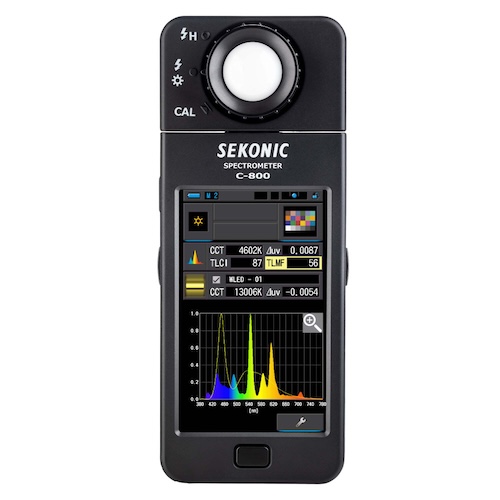
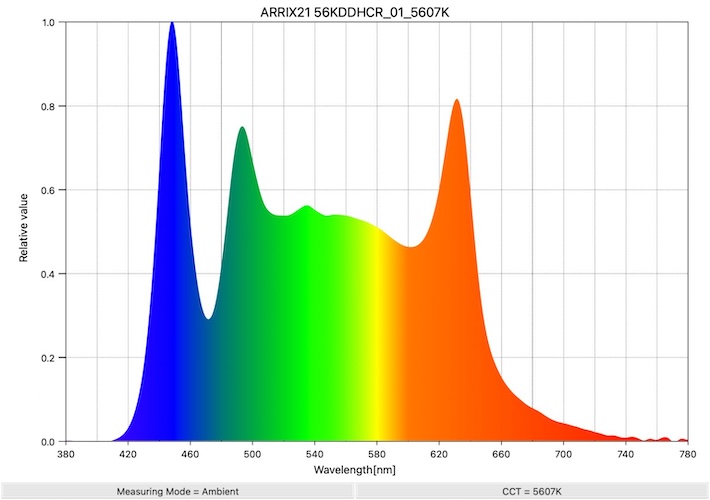
# https://global.sekonic.com/sekonic-c-800-spectrometer
# https://www.newsshooter.com/2024/08/25/arri-skypanel-x-review
Colour filters and microlenses
To characterise sensors, quantum efficiency (QE) is used, which is similar to the spectral distribution. This indicates how well a sensor can convert photons into electrons, i.e. how efficiently it detects light at different wavelengths. Like humans, sensors filter into three ranges using red, green and blue colour filters placed on the pixels. Microlenses on each pixel help focus the light before filtering. To avoid near infrared wavelengths, an IR cut filter is applied to the sensor surface. These are often removable from industrial cameras and some cameras are also available for purchase without the filter (NIR cameras).
NIR = Near Infrared
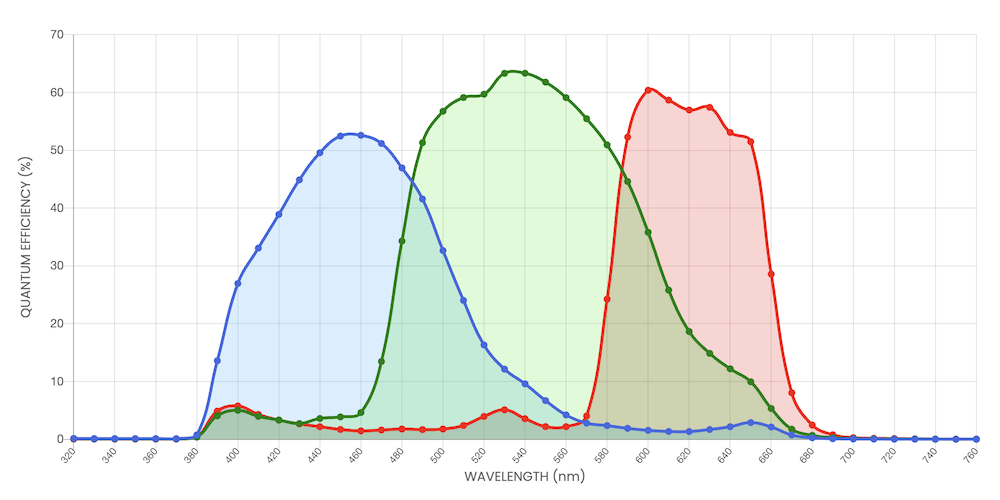
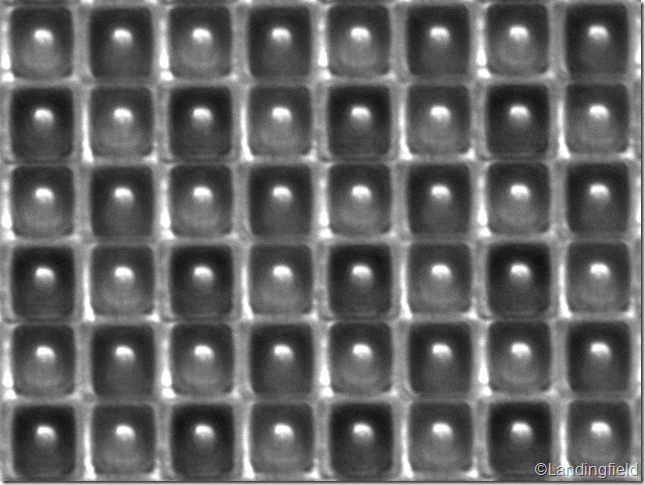
# https://thinklucid.com/product/phoenix-04-mp-imx287
# https://landingfield.wordpress.com/2013/02/06/peeping-into-pixel-a-micrograph-of-cmos-sensor
Bayer pattern
Bryce Bayer's 1976 patent used twice as many green colour filters as red and blue, so half the sample is green, a quarter red and a quarter blue. This was intended to mimic human vision, which is most sensitive to the colour green because the sensitivity curves of L- and M-type cones overlap significantly.
A pixel on a sensor can therefore only detect one colour. Interpolation is handled by the ISP, which in this case means the merging of pixels with different colours. The RGB value of all pixels can be estimated in one or more pixel steps in each direction, a process called demosaicing.
Using a ColorChecker
It is common to take photos of reference boards or cards to keep the colours true, either before a portrait shoot or when installing an industrial camera. These have standard colours so that a correction profile can be created for the environment based on the photographs. Calibrite's ColorChecker product is recognised by most editing software and can be used to correct automatically. A similar popular tool is the grey card, which contains one or more shades of grey. If correct colors are not crucial, such calibration is unneccessary.
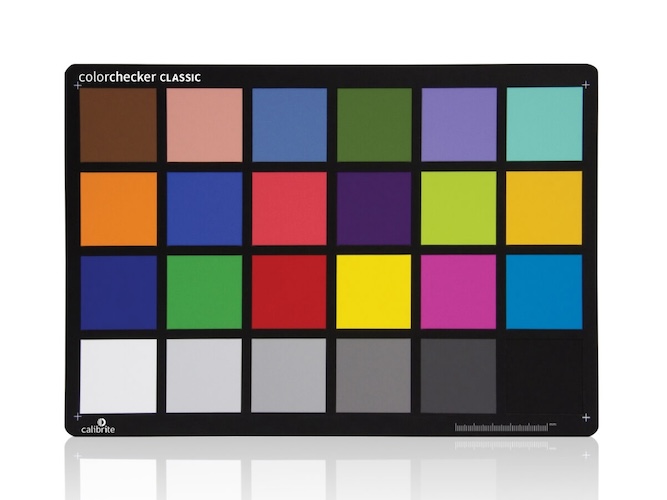
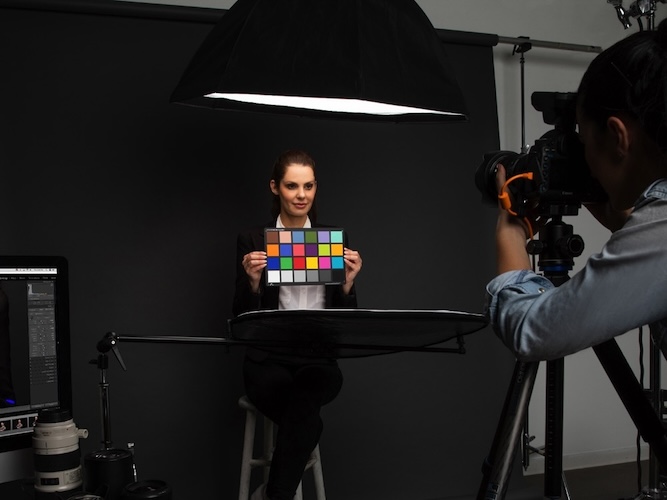
# https://calibrite.com/us/product/colorchecker-classic